Barlaston

Whilst googling Barlaston the other day a photo came up of Barlaston Hall, ‘That looks nice’, I thought. I mentioned it to Mick. He looked it up on the map, ‘It should be just about there’. He pointed out of the hatch and sure enough behind the railway and some trees we could make out the brick work of a rather nice looking big house.
Whilst I was working he went for a walk and came back reporting that the hall looked as though no-one was in, maybe it wasn’t occupied. He’d also been to have a look at the nearby village that had been built for workers at the Wedgewood Factory, a similar style of village to New Earswick near York, built for Rowntree employees.

It all sounded far too interesting not to have a look myself, so on Monday we did his walk in the opposite direction. We walked back along the towpath to Oldroad Bridge, here we crossed the canal and walked up to the level crossing.

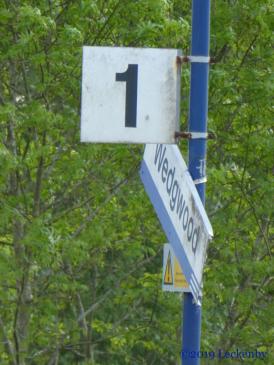
Wedgwood Station was opened in 1940 to serve the Wedgwood Factory, but in 2004 the line was temporarily closed for major works on the line. When the line reopened the station didn’t, the platforms now in need of repair. According to Wikipedia the area is now served by a rail replacement bus service, times can be found on the National Rail Journey Planner.
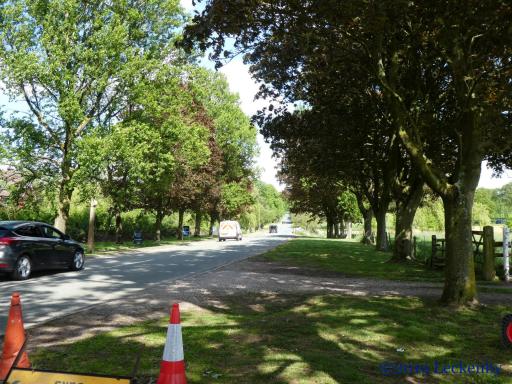
The new electric factory was built in the 1930’s, moving the factory from Etruria out to Barlaston where it was built in the grounds of Baralston Hall, which the Wedgwood family had bought. The road runs straight from the station up the hill, lined with giant oak trees. Younger trees are planted in between ready to take over when the older ones give up. The factory sits to one side of the road followed by the village.
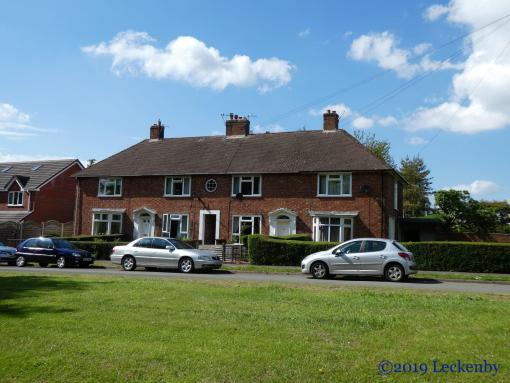
The houses are much bigger than I’d imagined. They give off the impression that they are even bigger, double fronted even. But this isn’t true, each building is actually four houses the end properties having their front doors tucked around the side. A rather nice place to live with work a short distance down the hill, just a shame that the convenience store is now closed, possibly no longer that convenient for those with cars.
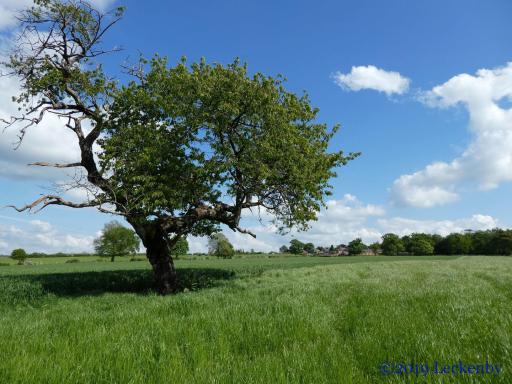
Crossing the road we followed a vague footpath through long grass further up the hill. The sky blue and the view improving across the valley with each step. This brought us out onto the road near to what was most probably stables for the hall. One converted barn currently up for sale here.

High hedges mostly of rhododendrons enclose the road. St John The Baptist Church has a wonderful Lych Gate which invites you into the grave yard. The tower is 12th Century, the rest of the building rebuilt in 1888. Inside there are memorials to the Wedgewood family but sadly the church closed in 1980 when large cracks appeared in the masonry due to subsidence. The windows have been replaced with perspex and grills and the face of the clock on the tower is smashed.
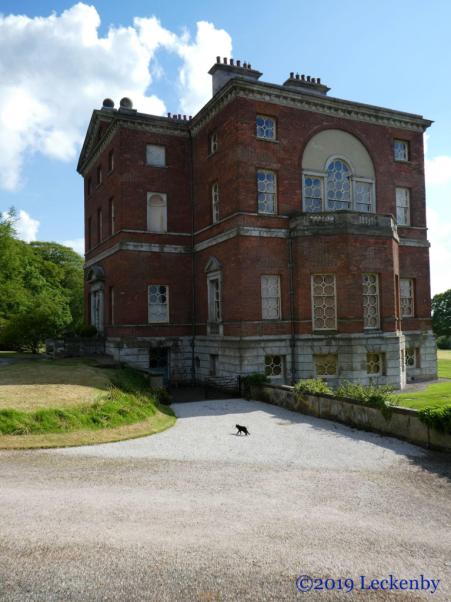
Next door is the Hall, what we’d really come to look at. The photo on Google really didn’t do it justice. A Grade 1 listed Palladian house built 1756-7 is attributed to Sir Robert Taylor with his trade mark windows.

A circular lawn sits in front of the main entrance, the other side of the building having a view that stretches to the canal and beyond for miles right across the valley. Wow!!
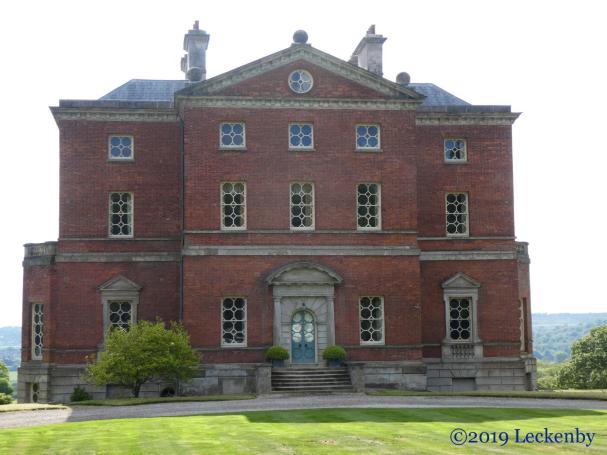
Woods stretch off to the side, providing spinney like places to play in as I’d had when I grew up in Fulford, York. Our garden bordered on one side by a bank of rhododendrons just like here. This all felt very homely, the house however a couple of hundred years older than the one my Dad had built, it is also about ten times it’s size. But what a house!

As we walked down through the fields below the views showed themselves even better, the view of the house wasn’t so bad either.
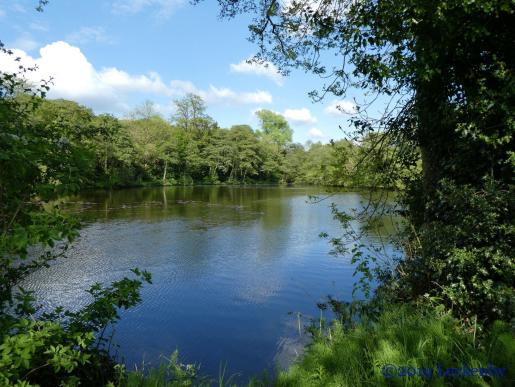
One field away from the railway a large pond sits, not quite a lake and possibly no longer part of the land that accompanies the house. What a place!

Yesterday when trying to find out more about the house we’d come across sale details. The house has had a LOT of restoration carried out to it. Wedgewood cared for the hall until the 1960’s when it then fell into disrepair and was vandalised. Lead was removed from the roof, major subsidence from coal mining occurred and the fact that it had been built over a fault in the geology meant that it was only a matter of time before 4 inch large cracks appeared in the brickwork.
Wedgwood twice tried to get the hall demolished, but in 1981 a rescue plan was put into action by SAVE Britains Heritage (big article here). The hall had been offered for £1. If in the following five years the hall was not completely restored then Wedgewood would have the right to buy it back for £1. The subsidence from extensive coal mining in the valley was put right, the Coal Board ending up paying £120,000 in compensation and funded preventative works. With more funding from English Heritage and a loan from the National Heritage Memorial Fund work commenced. The hall is one of the biggest success stories in English heritage.

By the time we had walked back to the railway station we had concocted a plan. If we were to sell our house in Scarborough, NB Oleanna, scrape together all our savings we’d have just enough for a reasonable deposit. But that would mean we’d have no income and I doubt one panto design a year would be enough for a bank to give us a mortgage. So where could we get the remainder?
One way would be to share the house with our family. Siblings could sell their London properties, this would most probably mean we’d not have to sell our house in Scarborough, instead someone from the family could move to the seaside away from smoggy London. The Hall would be large enough to house more than Mick, Tilly and myself, so other siblings, now no longer living in London could also move in.

With four reception rooms, 7 bedrooms, 5 bathrooms, 2 attic rooms, a study, galleried landings, 3 garages, stables, an orangery, a self contained flat, 1 large kitchen, wine cellar (bigger than under our back steps) we’d most probably have to arrange to have a family get together once a month so as to see each other.
What would we do with Oleanna? Well the pond/lake could be dredged and could become an end of garden mooring. We’d need to build a couple of locks to reach the Trent and Mersey canal,, but these would mean we’d be able to get under the railway line. The station would be the next thing to improve, if we won the Euro millions, we’d be able to have work done to the station and make it into a request stop.
All perfectly possible. We just need to dissuade the people who have put an offer in already.
I think we have a plan!
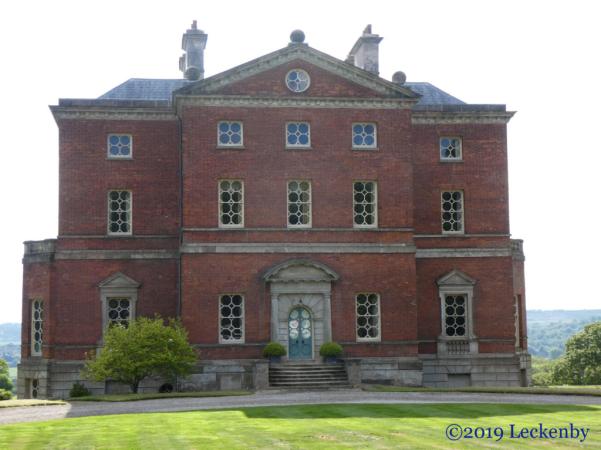

Missed this in the run-up to going away. I’m definitely up for a move though I haven’t consulted paul yet, looks fabulous!